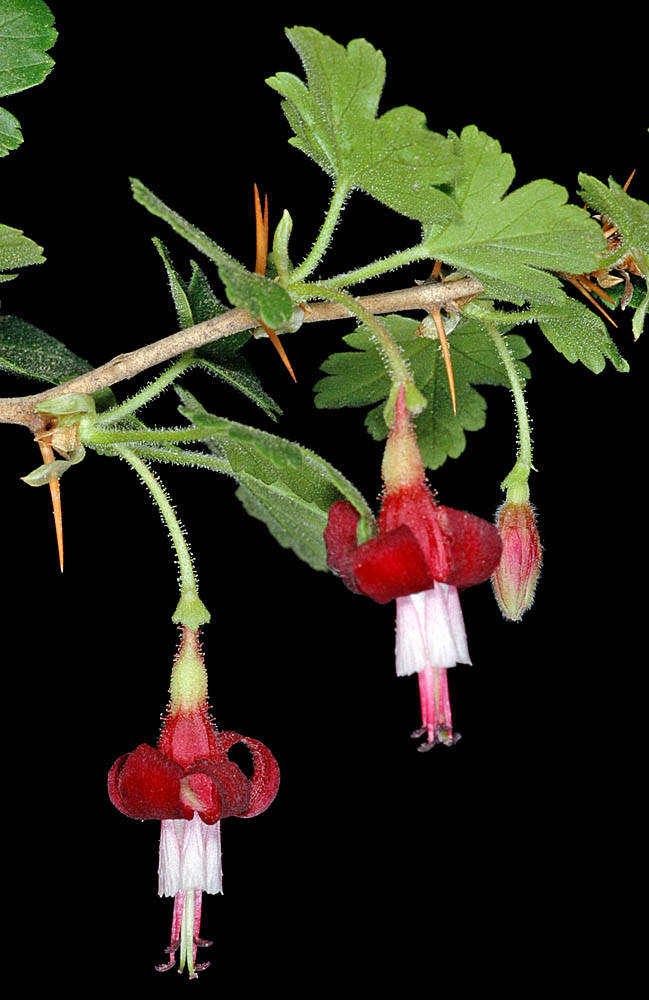
[This taxon will be assessed for treatment in volume 3 of Flora of Oregon, which is not yet published.]
as described under Ribes lobbii
Plants 0.5-1(-1.5) m. Stems erect or spreading, finely pubescent, not bristly; spines at nodes usually 3, 7-12 mm; prickles on internodes absent or sparse. Leaves: petiole 1-4 cm, glandular-pubescent; blade round-ovate, 3-5-lobed, cleft less than 1/2 to midrib, 1.5-2.5 cm, base shallowly cordate, surfaces paler and usually pubescent and glandular abaxially, sparsely pubescent adaxially, lobes rounded, shallowly cleft, margins crenate-dentate, apex rounded. Inflorescences pendent, solitary flowers or 2-flowered racemes, 4-6 cm, axis stipitate-glandular. Pedicels not jointed, 3-4 mm, densely stipitate-glandular; bracts broadly ovate, 2-3 mm, stipitate-glandular. Flowers: hypanthium greenish with strong reddish tinge abaxially, narrowly campanulate, 3.5-5.5 mm, sparsely pilose; sepals not overlapping, reflexed, bright red, narrowly oblong, 10-13 mm; petals connivent, erect, white or pinkish, broadly flabelliform but usually inrolled on edges, 4-5(-7) mm; nectary disc not prominent; stamens 2 times as long as petals; filaments linear, 8-14 mm, glabrous; anthers purple or red, oval, 1.2-2 mm, apex rounded; ovary glandular; styles connate 2/5-3/5 their lengths, 8-14 mm, glabrous. Berries palatable, reddish brown, globose-ellipsoid, 10-15(-20) mm, coarsely setose-glandular, not prickly.Flowering Apr-Jun. Montane and subalpine forests; 100-2200 m; B.C.; Calif., Oreg., Wash.Ribes lobbii occurs in mountains from southwestern British Columbia to northwestern California. It is unusual in having anthers that are warty or capitate-papillate with red glands abaxially.